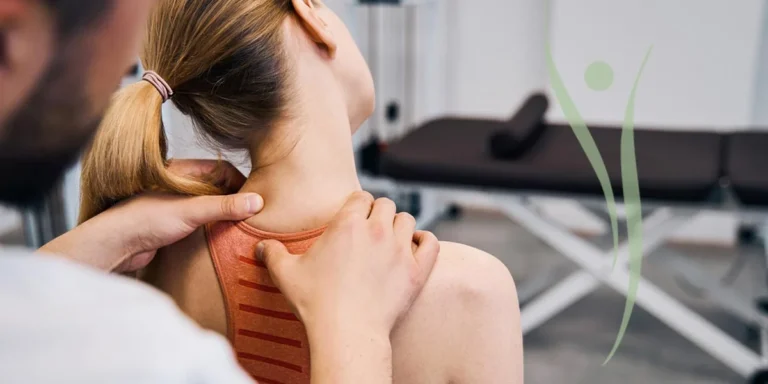Book Appointment Now

Shoulder Pain Relief: Best Physiotherapy Techniques
Hello everyone, Dr. Gaurav Vaid here. As a physiotherapist serving in Jammu, I have treated many patients with shoulder pain, so I fully empathize with how unbearable this condition can be. Shoulder pain is the most common problem of patients at the Swasthya Shastra clinic, and it has a great effect on their daily lives. As a matter of fact, the proper management of this issue is the key to resolving it, no matter where it comes from: whether it is overuse, injury, or just the wear and tear of time.
Understanding Shoulder Pain
The first step that must be taken to mitigate shoulder pain is to clarify its origin. Shoulder pain can be an outcome of the following factors:
- Rotator cuff injuries: These affect the muscles and tendons that surround the shoulder joint.
- Frozen shoulder: This ailment restricts movement by causing discomfort and stiffness.
- Arthritis: This condition may cause joint deterioration and inflammation.
- Muscle strains and tears: These might result from abrupt movements or overexertion.
- Impingement: This happens when the shoulder joint’s tendons are compressed.
Firstly, in the specific area of Jammu, environmental and lifestyle factors like these can also play a role in the development of these problems. For instance, carrying heavy weights and not preparing adequately for physically demanding activities can result in shoulder injuries. Moreover, at times, the change in weather in the region can aggravate the pains in the joints.
Physiotherapy Techniques for Shoulder Pain Relief
Physiotherapy is a very important factor in coping with shoulder pain treatment and care. The following are some effective procedures:
Manual Therapy:
- It’s a procedure in which hands-on techniques are used to treat problems, e.g., joint mobilization and soft tissue releases.
- These strategies are responsible for the improvement of joint movements and reduction in muscle tension.
- Locally, the addition of traditional healing, which many “Malish” (massage) practitioners can only provide, is the healing process that most people are looking for who seek the modern physiotherapy approach.
Therapeutic Exercises:
- The exercises are mainly building muscle strength and enhancing the flexibility of the shoulder muscles. For example, pendulum, isometric, and ROM are some of the exercises.
- They are effective for injury recovery and the prevention of future injuries.
- As an illustration, soft stretching and strength exercises are a couple of options that can be done at home, and they are simple to add to daily routines, even in the cramped spaces of many homes in Jammu.
Modalities:
- These are therapeutic techniques such as ultrasound, electrical stimulation, and heat or cold therapy.
- Ultrasound technology is the best choice to lessen inflammation and speed up the recovery of the tissues.
- Electrical stimulation is assigned the duty of reducing pain and spasms of the muscles.
- Heat or cold therapy gives instant pain relief.
- An increasing number of patients find that supportive means like the use of heat (described as “Taping”) or warm compresses are being used along with those therapies.
Posture Correction:
- Proper posture is necessary to protect shoulder health.
- A physiotherapist ensures that exercises and techniques are executed that result in the improvement and prevention of posture and strain, respectively.
- A lot of the inhabitants of Jammu, who spend most of their time in the office or at the shop, have found out the hard way that they have incorrect posture.
Education and Self-Management:
- Physiotherapists not only provide patients with tips on maintaining proper body mechanics and preventing injuries, but also provide education.
- Patients are also trained in matters of self-care, such as home exercises and pain management techniques.
- Patients are supposed to be informed as to how long their condition will last and what preventive measures could be used to prevent recurrences.
Also, read How Physiotherapy Helps in Chronic Pain Management
Simple Exercises You Can Try
Let’s take a look at some simple exercises that you can try at home:
- Pendulum Exercise: Lean forward, hang your suffering arm freely; the movements will mostly be forward and backward, side to side, and around.
- Isometric External Rotation: Position yourself at a distance from the wall, standing, and start to push your arm against the wall, elbow bent at 90 degs, hold for 5-10 seconds, release, and repeat.
- Shoulder Blade Squeezes: Sit or stand with your arms at your sides. Squeeze your shoulder blades together, hold for 5-10 seconds, and repeat.
When to Seek Professional Help
It’s essential to seek professional help if you experience:
- Severe pain that doesn’t improve with a self-care strategy.
- Numbness or tingling in your arm or hand.
- Difficulty in moving your shoulder.
- Signs of infection, such as redness, swelling, or fever.
Conclusion
One of the real sore spots in shoulder pain can be the amount of trouble it causes a person. However, physiotherapy approaches can truly help you. You will realize that the pain has already subsided when your life gets back to the usual track after being treated at Swasthya Shastra by me, Dr. Gaurav Vaid, and my team. Subjects should remember that timely support and regular exercise are essential to total recovery in the long run.
For further queries, please reach out to Dr. Gaurav Vaid or Swasthya Shastra.


